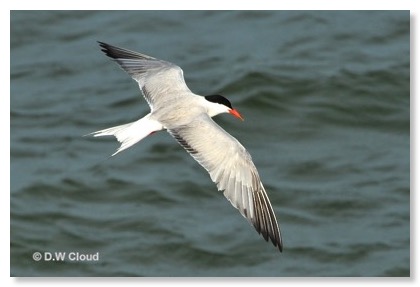Bird Migration
Report and photograph by D.W. Cloud

An Alaskan bar-tailed godwit that was tracked with a satellite tag flew 6,800 miles from Alaska to New Zealand non-stop in one eight-day flight (www.plosbiology.org). “The godwits gorge themselves on shellfish, until the fat builds up into thick rolls under their skin--up to 55% of their total weight. Then they stop eating and their intestines, kidneys and liver shrivel up to a fraction of their usual size, eliminating unnecessary weight” (Jonathan Sarfati, By Design, p. 88).
The whimbrel migrates non-stop 3,500 miles from the Southampton Island in Canada’s Arctic to the mouth of the Amazon River in Brazil. One whimbrel that was tagged with a radio transmitter flew through Hurricane Irene when it was a category 3 storm and not only did the bird survive, it was able to make the necessary correction after being blown off course and complete its migration successfully (“Bird Migrates through Hurricane Irene,” USA Today, August 28, 2011).
The bar-headed goose migrates over the Himalayan mountains, flying more than five and a half miles high where there is very little oxygen, the temperature is freezing cold, and the winds typically blow with hurricane fury.
The golden plover migrates from Alaska to Hawaii, unerringly finding a tiny island in the middle of the Pacific Ocean after a journey of 3,000 miles.
The ruby-throated hummingbird flies non-stop 450 miles across the Gulf of Mexico in 20 hours, beating its tiny wings nearly 3 million times on that amazing journey.
The cuckoo bird lays its eggs in the nest of another type of bird, then flies 12,000 miles to South Africa. After the baby bird hatches, it flies 12,000 miles to join the parents it has never seen at a place it has never been (Richard Milton, Shattering the Myths of Darwinism, p. 249).
The Manx Shearwater, a seabird that nests around Great Britain and Ireland, migrates over 10,000 kilometers (6,200 miles) to South America in winter. One bird that was tagged in 1957 and still breeding on Bardsey Island off Wales in 2002 has been estimated to have flown 8 million km. (five million miles) in its lifetime. A Manx Shearwater was taken to Boston, tagged, and released, and in 12 days it returned to its nest off Wales 3,200 miles away (A Closer Look at the Evidence, May 6).
The swift migrates at night up to 10,000 feet high and sleeps during flight. Johan Backman, who studied swift flight with radar, says, “We found that swifts have an extraordinary ability to perform orientations in relation to wind. Even the most advanced planes, with good navigational instruments, would probably be unable to judge the wind drift like this. The remarkable thing is that they do all this while flying through the night and sleeping on the wing at these very high altitudes” (“How the Swift Keeps to Its Course,” Sunday Telegraph, March 14, 2004, cited from Jonathan Sarfati, By Design, p. 91).


